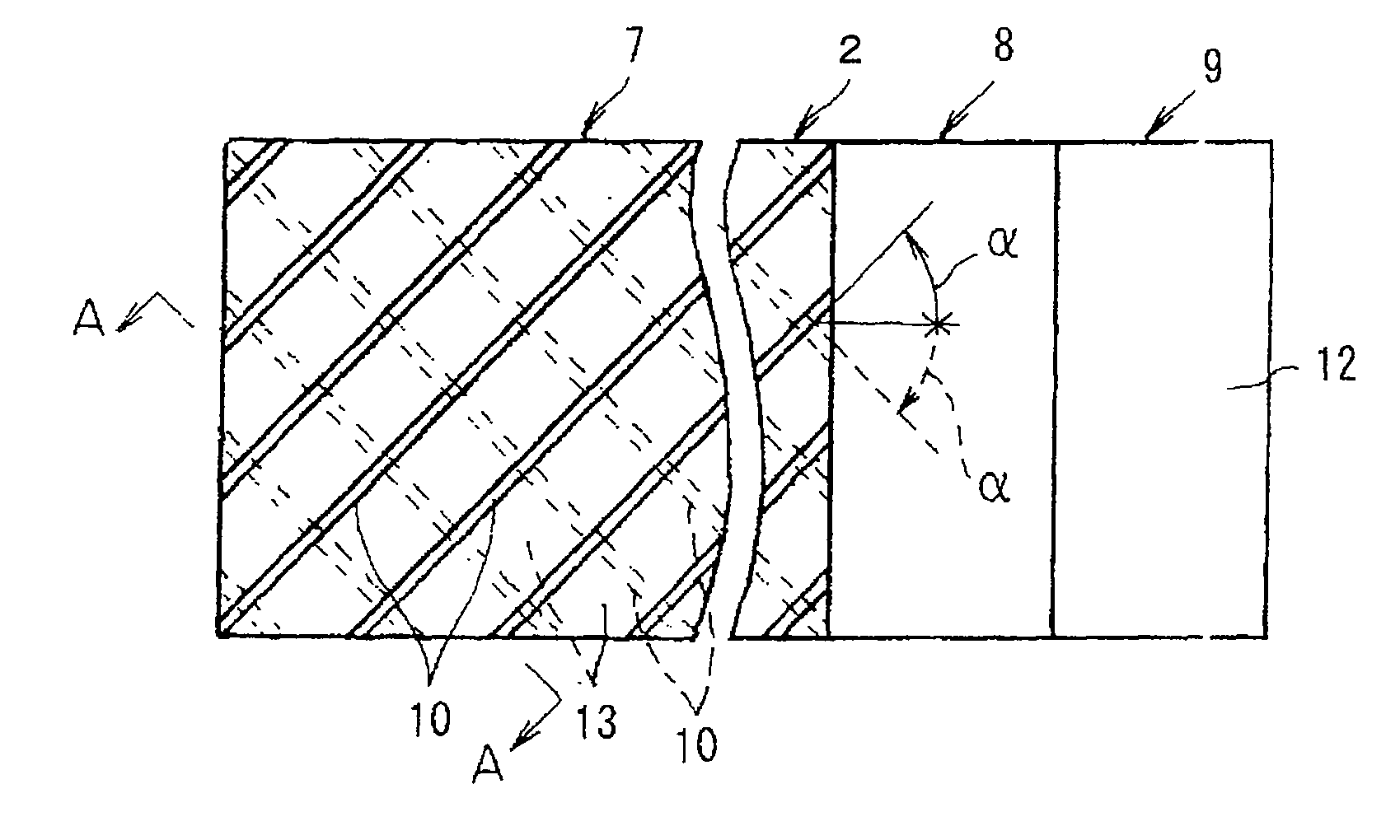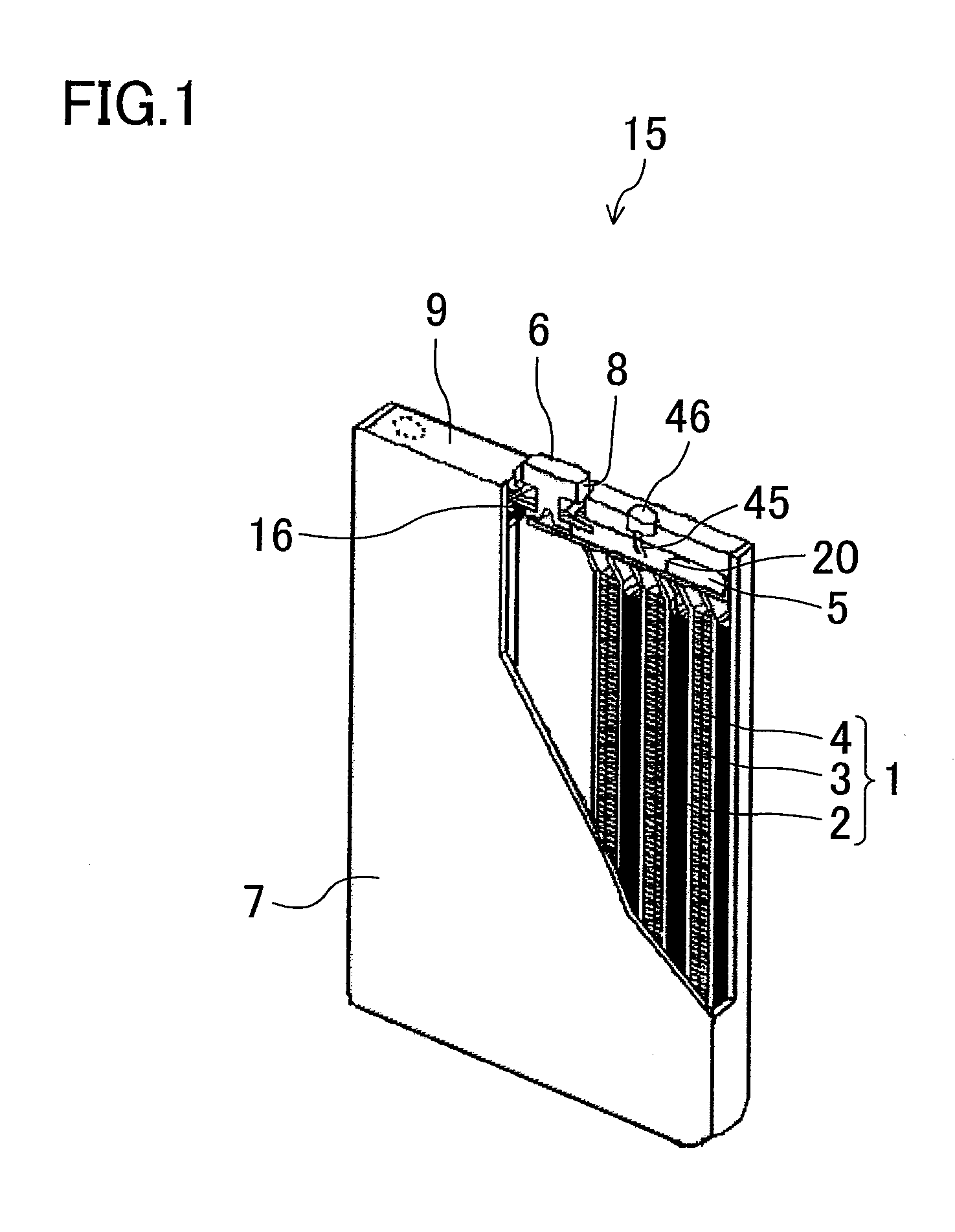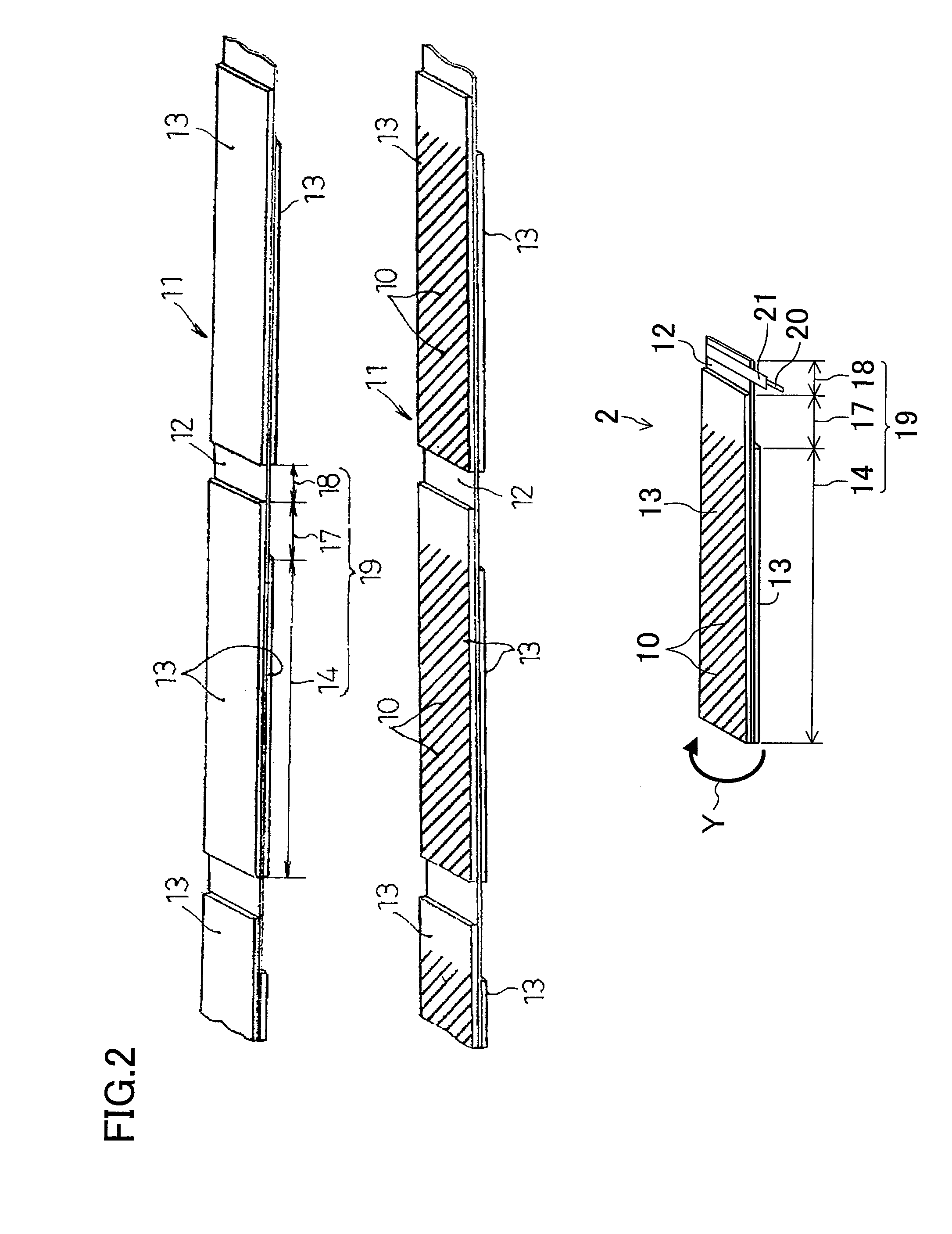Positive electrode for nonaqueous battery, electrode group for nonaqueous battery and method for producing the same, and rectangular nonaqueous secondary battery and method for producing the same
- Summary
- Abstract
- Description
- Claims
- Application Information
AI Technical Summary
Benefits of technology
Problems solved by technology
Method used
Image
Examples
example 1
[0139]As a positive electrode active material, lithium nickel composite oxide represented by the composition formula of LiNi0.8Co0.15Al0.05O2 was used. To a NiSO4 aqueous solution, cobalt sulfate and aluminum sulfate of the predetermined ratio were added to prepare a saturated aqueous solution. While stirring the saturated aqueous solution, an alkaline solution dissolving sodium hydroxide was slowly dropped therein for neutralization, thereby precipitating ternary system nickel hydroxide Ni0.8Co0.15Al0.05(OH)2. The precipitate was filtered, washed with water, and dried at 80° C. Nickel hydroxide obtained in this manner had an average particle diameter of about 10 μm.
[0140]Lithium hydroxide hydrate was added in such a manner the ratio between the sum of numbers of atoms of Ni, Co, and Al and the number of atoms of Li was 1:1.03, and the obtained product was thermally treated in an oxygen atmosphere for 10 hours at 800° C. to obtain LiNi0.8Co0.15Al0.05O2. As a result of powder X-ray d...
PUM
| Property | Measurement | Unit |
|---|---|---|
| Angle | aaaaa | aaaaa |
| Length | aaaaa | aaaaa |
| Length | aaaaa | aaaaa |
Abstract
Description
Claims
Application Information
 Login to View More
Login to View More - R&D
- Intellectual Property
- Life Sciences
- Materials
- Tech Scout
- Unparalleled Data Quality
- Higher Quality Content
- 60% Fewer Hallucinations
Browse by: Latest US Patents, China's latest patents, Technical Efficacy Thesaurus, Application Domain, Technology Topic, Popular Technical Reports.
© 2025 PatSnap. All rights reserved.Legal|Privacy policy|Modern Slavery Act Transparency Statement|Sitemap|About US| Contact US: help@patsnap.com



